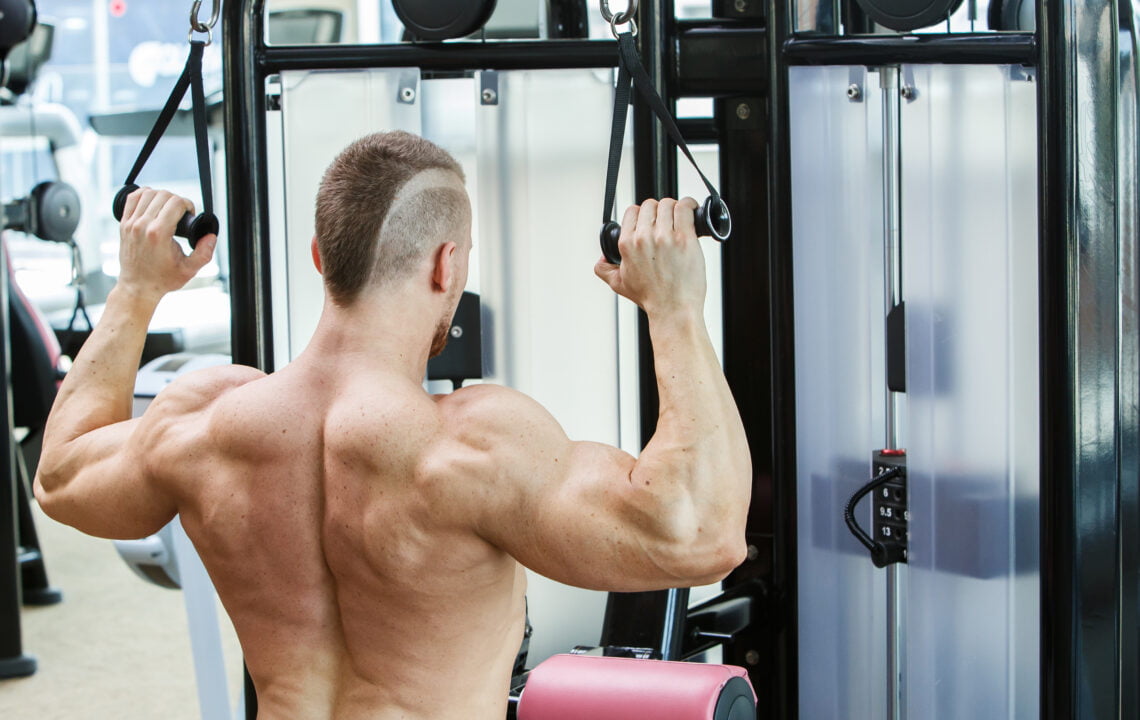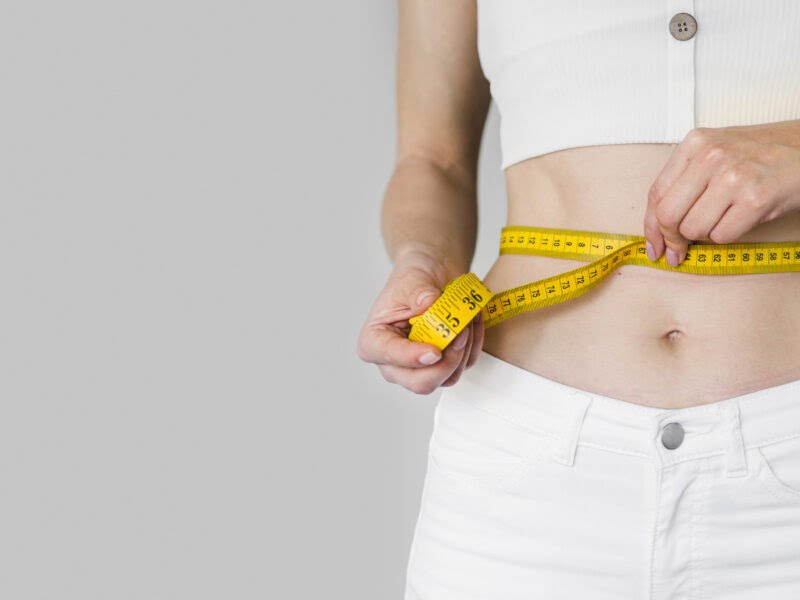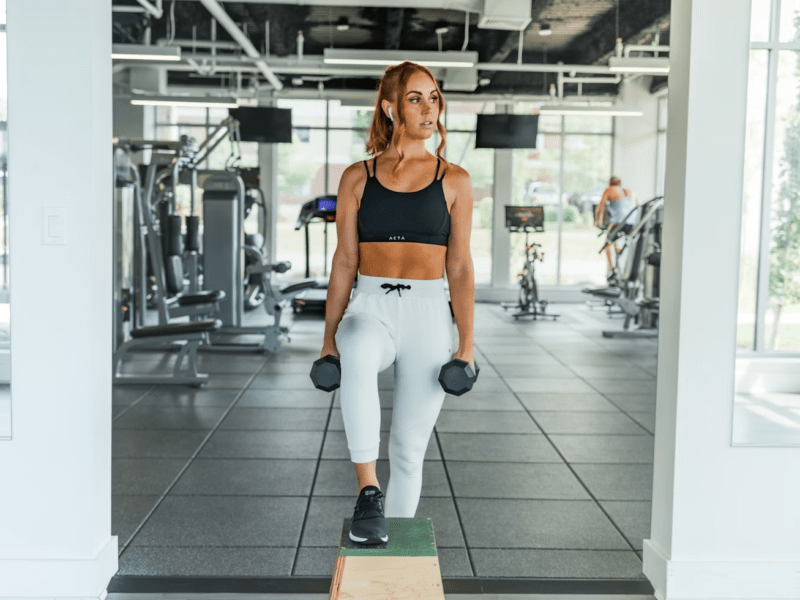The debate between the Overhead Press and the Shoulder Press, two cornerstone exercises for upper body development, depends on their distinct benefits and mechanics.
The Overhead Press, traditionally performed standing, not only targets the shoulders but also significantly engages the core and stabilizing muscles, due to the necessity for balance and posture control.
This compound movement can activate numerous muscle groups, with one study indicating an involvement of up to 74% of the deltoid muscles for a comprehensive upper body workout.
Conversely, the Shoulder Press, which can be executed either seated or standing, offers a more isolated approach, focusing primarily on the deltoids and, to a lesser extent, the triceps. It’s often recommended for those specifically looking to enhance shoulder strength and muscle mass.
Both exercises offer unique advantages, whether for functional strength, muscle symmetry, or specific fitness goals, making the choice between them dependent on personal training objectives and the desired intensity of muscle engagement.
The Overhead Press, traditionally performed standing, not only targets the shoulders but also significantly engages the core and stabilizing muscles, due to the necessity for balance and posture control.
This compound movement can activate numerous muscle groups, with one study indicating an involvement of up to 74% of the deltoid muscles for a comprehensive upper body workout.
Conversely, the Shoulder Press, which can be executed either seated or standing, offers a more isolated approach, focusing primarily on the deltoids and, to a lesser extent, the triceps. It’s often recommended for those specifically looking to enhance shoulder strength and muscle mass.
Both exercises offer unique advantages, whether for functional strength, muscle symmetry, or specific fitness goals, making the choice between them dependent on personal training objectives and the desired intensity of muscle engagement.
Overhead Press and Shoulder Press: The Differences
The Overhead Press and the Shoulder Press are both fundamental exercises for upper body strength, but they have distinct differences that cater to various fitness goals and preferences. Here’s a closer look at the key differences between these two lifts:
Execution and Form
Overhead Press: Typically performed standing, this exercise requires lifting a barbell or dumbbells from shoulder height to directly overhead. The standing position engages the core and lower body for stability, making it a full-body compound movement.
Shoulder Press: Can be done seated or standing, focusing more on isolating the shoulder muscles. When performed seated, it reduces the involvement of the lower body and core, allowing for a more concentrated effort on the shoulders.
Muscle Engagement
Overhead Press: Engages a broader range of muscles, including the deltoids, triceps, upper chest, and core. It also involves the lower back and legs to a degree, for stability and support during the lift.
Shoulder Press: Primarily targets the deltoid muscles in the shoulders, with significant engagement of the triceps. The seated version, in particular, allows for greater isolation of these muscles with less core engagement required.
Functional Strength vs. Isolation
Overhead Press: Enhances functional strength by mimicking everyday lifting movements and improving overall body coordination and balance. It’s beneficial for athletic performance and general physical preparedness.
Shoulder Press: Focuses on isolating and building the shoulder muscles, making it ideal for aesthetic muscle building and targeted strength improvements in the shoulders.
Risk and Safety
Overhead Press: The standing position and full-body engagement increase the complexity of the movement, which might raise the risk of form errors and injuries, especially in the lower back.
Shoulder Press: Performing this exercise seated can reduce the risk of lower back strain, making it a safer option for individuals with back concerns.
Training Objectives Choosing between the Overhead Press and Shoulder Press often comes down to training objectives:
Overall Strength and Athleticism: The Overhead Press is more suitable for those aiming to build comprehensive strength and improve functional movements.
Shoulder Development and Aesthetics: The Shoulder Press is better for those focusing on isolating and enhancing the shoulder muscles for aesthetic or rehabilitation purposes.
Execution and Form
Overhead Press: Typically performed standing, this exercise requires lifting a barbell or dumbbells from shoulder height to directly overhead. The standing position engages the core and lower body for stability, making it a full-body compound movement.
Shoulder Press: Can be done seated or standing, focusing more on isolating the shoulder muscles. When performed seated, it reduces the involvement of the lower body and core, allowing for a more concentrated effort on the shoulders.
Muscle Engagement
Overhead Press: Engages a broader range of muscles, including the deltoids, triceps, upper chest, and core. It also involves the lower back and legs to a degree, for stability and support during the lift.
Shoulder Press: Primarily targets the deltoid muscles in the shoulders, with significant engagement of the triceps. The seated version, in particular, allows for greater isolation of these muscles with less core engagement required.
Functional Strength vs. Isolation
Overhead Press: Enhances functional strength by mimicking everyday lifting movements and improving overall body coordination and balance. It’s beneficial for athletic performance and general physical preparedness.
Shoulder Press: Focuses on isolating and building the shoulder muscles, making it ideal for aesthetic muscle building and targeted strength improvements in the shoulders.
Risk and Safety
Overhead Press: The standing position and full-body engagement increase the complexity of the movement, which might raise the risk of form errors and injuries, especially in the lower back.
Shoulder Press: Performing this exercise seated can reduce the risk of lower back strain, making it a safer option for individuals with back concerns.
Training Objectives Choosing between the Overhead Press and Shoulder Press often comes down to training objectives:
Overall Strength and Athleticism: The Overhead Press is more suitable for those aiming to build comprehensive strength and improve functional movements.
Shoulder Development and Aesthetics: The Shoulder Press is better for those focusing on isolating and enhancing the shoulder muscles for aesthetic or rehabilitation purposes.
Is Overhead Press Or Shoulder Press Better?
Deciding whether the Overhead Press or Shoulder Press is better depends on your specific fitness goals, physical condition, and training preferences. Here’s a breakdown to help determine which might be more suitable for you:
Overhead Press
Full Body Engagement: Engages more stabilizing muscles, including the core, for a compound workout.
Functional Strength: Improves functional strength and mimics real-life movements, enhancing athletic performance.
Balance and Posture: Challenges your balance and posture, which can contribute to better overall body mechanics.
Shoulder Press
Muscle Isolation: More effectively isolates the shoulder muscles, particularly the deltoids, for targeted strength and size.
Versatility: Can be performed seated or standing, which may be beneficial for individuals with lower back issues.
Control and Stability: The seated variation offers more stability, potentially allowing for heavier lifting with less risk of injury.
Considerations
Fitness Goals: If your goal is overall strength and functional fitness, the Overhead Press may be more beneficial. For focused shoulder development and hypertrophy, the Shoulder Press could be preferable.
Physical Condition: Those with back issues may find the seated Shoulder Press more comfortable and safer, while those looking to enhance core strength and stability might opt for the Overhead Press.
Training Variety: Incorporating both exercises into your routine could provide a comprehensive approach to upper body strength, allowing you to reap the benefits of both compound and isolated movements.
Overhead Press
Full Body Engagement: Engages more stabilizing muscles, including the core, for a compound workout.
Functional Strength: Improves functional strength and mimics real-life movements, enhancing athletic performance.
Balance and Posture: Challenges your balance and posture, which can contribute to better overall body mechanics.
Shoulder Press
Muscle Isolation: More effectively isolates the shoulder muscles, particularly the deltoids, for targeted strength and size.
Versatility: Can be performed seated or standing, which may be beneficial for individuals with lower back issues.
Control and Stability: The seated variation offers more stability, potentially allowing for heavier lifting with less risk of injury.
Considerations
Fitness Goals: If your goal is overall strength and functional fitness, the Overhead Press may be more beneficial. For focused shoulder development and hypertrophy, the Shoulder Press could be preferable.
Physical Condition: Those with back issues may find the seated Shoulder Press more comfortable and safer, while those looking to enhance core strength and stability might opt for the Overhead Press.
Training Variety: Incorporating both exercises into your routine could provide a comprehensive approach to upper body strength, allowing you to reap the benefits of both compound and isolated movements.
Choosing the Right Exercise for Your Goals
Choosing the right exercise between the Overhead Press and Shoulder Press depends on your specific fitness goals, physical capabilities, and overall training strategy. Here’s a guide to help you decide which exercise aligns best with your objectives:
Goal: Overall Strength and Functional Fitness
Choose Overhead Press: If your goal is to build overall strength, improve functional fitness, and enhance your ability to perform everyday activities or sports-related movements, the Overhead Press is ideal. It engages multiple muscle groups, including the core, shoulders, and arms, contributing to improved posture, balance, and total body strength.
Goal: Overall Strength and Functional Fitness
Choose Overhead Press: If your goal is to build overall strength, improve functional fitness, and enhance your ability to perform everyday activities or sports-related movements, the Overhead Press is ideal. It engages multiple muscle groups, including the core, shoulders, and arms, contributing to improved posture, balance, and total body strength.
Goal: Shoulder Muscle Isolation and Aesthetics
Choose Shoulder Press: For those focused on isolating shoulder muscles to increase muscle mass, definition, or recover from injury, the Shoulder Press, especially performed seated, can provide targeted engagement of the deltoids and triceps without overtaxing other areas.
Goal: Core Stability and Posture Improvement
Choose Overhead Press: Standing exercises like the Overhead Press require significant core engagement to stabilize the body, making them excellent for strengthening the core muscles and improving posture.
Choose Shoulder Press: For those focused on isolating shoulder muscles to increase muscle mass, definition, or recover from injury, the Shoulder Press, especially performed seated, can provide targeted engagement of the deltoids and triceps without overtaxing other areas.
Goal: Core Stability and Posture Improvement
Choose Overhead Press: Standing exercises like the Overhead Press require significant core engagement to stabilize the body, making them excellent for strengthening the core muscles and improving posture.

Goal: Minimizing Lower Back Strain
Choose Shoulder Press (Seated): Individuals with lower back issues or concerns may find the seated Shoulder Press to be a safer option, as it reduces the load on the lower back compared to standing exercises that require core stabilization.
Goal: Training Versatility and Adaptability
Incorporate Both: Utilizing both exercises in your workout regimen can provide a comprehensive approach to upper body training, combining the benefits of functional strength with targeted muscle development. Alternating between the two can also prevent training monotony and adaptability, promoting continuous progress.
Consider Your Training Experience
Beginners: Might start with the Shoulder Press to focus on form and muscle engagement before moving to the more complex Overhead Press.
Advanced: Individuals with more experience can benefit from the complexity and challenge of the Overhead Press, adding it to their routine to further enhance upper body strength and functional capacity.
Choose Shoulder Press (Seated): Individuals with lower back issues or concerns may find the seated Shoulder Press to be a safer option, as it reduces the load on the lower back compared to standing exercises that require core stabilization.
Goal: Training Versatility and Adaptability
Incorporate Both: Utilizing both exercises in your workout regimen can provide a comprehensive approach to upper body training, combining the benefits of functional strength with targeted muscle development. Alternating between the two can also prevent training monotony and adaptability, promoting continuous progress.
Consider Your Training Experience
Beginners: Might start with the Shoulder Press to focus on form and muscle engagement before moving to the more complex Overhead Press.
Advanced: Individuals with more experience can benefit from the complexity and challenge of the Overhead Press, adding it to their routine to further enhance upper body strength and functional capacity.
Conclusion: Can I Only Do Overhead Press For Shoulders?
Choosing between the Overhead Press and Shoulder Press depends on your goals. The Overhead Press boosts overall strength and functional fitness, beneficial for athletic performance. The Shoulder Press focuses on shoulder muscle isolation, ideal for aesthetic goals or reducing back strain.
Mixing both exercises in your routine offers a balanced approach, catering to diverse fitness objectives. Whether starting out or advancing in your training, the choice should align with your health and fitness goals.
Consulting a fitness professional can help tailor your workout effectively, ensuring you achieve your desired outcomes safely and efficiently.
Mixing both exercises in your routine offers a balanced approach, catering to diverse fitness objectives. Whether starting out or advancing in your training, the choice should align with your health and fitness goals.
Consulting a fitness professional can help tailor your workout effectively, ensuring you achieve your desired outcomes safely and efficiently.





![Does Using Crutches Build Muscle: Complete Guide [Updated]](https://supeshealth.com/wp-content/uploads/2024/03/full-shot-smiley-man-training-800x600.jpg)